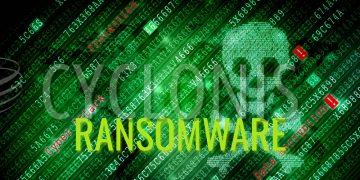The Bully Ransomware: A Menacing Attack on Your Data

Ransomware continues to be a potent tool for cybercriminals, with The Bully being one of the more sinister variants in the ever-evolving threat landscape. The Bully is based on Chaos ransomware. Its mission is simple yet devastating: encrypting data and demanding ransom payments to restore access. Here, we delve into how The Bully operates, what it demands, and why ransomware programs like this one are such a growing concern.
Table of Contents
How The Bully Ransomware Works
Once The Bully infiltrates a device, it initiates an encryption process that renders files inaccessible. This encryption tactic is common in ransomware attacks, but The Bully adds a personal twist. Files on the infected system are renamed with the extension ".HAHAHAIAMABULLY." For instance, an image originally titled "photo.jpg" would be changed to "photo.jpg.HAHAHAIAMABULLY." This extension is a mocking signature from the attackers, signaling the compromised state of the victim's files.
After locking down a system's data, The Bully leaves a ransom note titled "read_it.txt." The note informs the victim that their files have not only been encrypted but also stolen. The criminals demand a ransom for both decryption and the assurance that the stolen data won't be leaked. The message warns against using third-party decryption tools, claiming that such attempts could permanently damage the files.
Check out the ransom note below:
the bully ransomware
oh no it seems like your files has been STOLEN and ENCRYPTED!!! to decrypt your file pay us all your lunch money at lerchsilas125@gmail.com
_________________________
WARNING!
do not try to decyrpt your files with 3rd party decryotors or your files will be gone and u might get scammed
The False Hope of Ransom Payments
Like most ransomware programs, The Bully gives the illusion that payment will result in data recovery. However, cybersecurity experts frequently caution victims against paying. While the ransom note may suggest that paying will secure a decryption key, there is no guarantee that the attackers will follow through on their promise. In many cases, victims who pay receive no help from the criminals, and their files remain locked or leaked despite the payment.
It's important to understand that even if The Bully is successfully removed from a system, any files that have already been encrypted remain inaccessible unless a backup exists. Decrypting the files without the attackers' key is often impossible, which makes having pre-existing, secure backups essential. Relying on backups is the only guaranteed way to recover data after an attack, as paying the ransom supports the continuation of these illegal operations.
The Spread of The Bully and Ransomware Tactics
Ransomware like The Bully doesn't spread randomly. Cybercriminals use a variety of deceptive techniques to infect victims' devices. Phishing emails remain one of the most common methods, where malicious attachments or links are disguised as legitimate content. These emails often trick users into opening infected files, which triggers the ransomware.
In addition to phishing, ransomware can spread through other channels, such as compromised websites, fake software updates, and illegal software activators, also known as "cracks." Attackers may also use backdoor trojans or drive-by downloads to silently deliver malware onto a system. In some cases, ransomware variants can even spread across local networks, infecting multiple connected devices at once.
Defending Against Ransomware Attacks
Vigilance is the most effective defense against ransomware, including The Bully. Individuals and organizations should exercise caution when opening email attachments or clicking on links, especially if the source is unfamiliar. Downloading software from official and trustworthy channels is another crucial practice, as pirated or unofficial downloads often contain hidden threats.
The best way to mitigate the damage from ransomware attacks is to back up data regularly and store these backups in multiple secure locations. External storage devices and cloud backups should be kept disconnected from the primary system to prevent them from being compromised in the event of an infection. By maintaining up-to-date backups, victims can recover their data without giving in to ransom demands.
Why Ransomware Continues to Thrive
Ransomware remains a favorite tool among cybercriminals because it is highly profitable. Attackers know that victims—whether individuals or businesses—may feel desperate enough to pay for the restoration of their files. The Bully leverages this fear by threatening not only file encryption but also data theft, implying that private information could be leaked if the ransom is not paid.
Despite the effectiveness of these scare tactics, paying the ransom only encourages further criminal activity. Ransomware developers use their profits to create more sophisticated attacks, targeting even larger numbers of victims. By refusing to pay, victims can avoid contributing to the cycle of ransomware proliferation.
Staying One Step Ahead of The Bully
The Bully Ransomware is yet another example of how destructive ransomware can be. By locking down a victim's data and demanding a ransom, it aims to exploit people's fears and force them into compliance. However, paying the ransom offers no guarantees, and the only surefire way to recover from such an attack is to have secure, pre-existing backups in place.
To protect against The Bully and other ransomware threats, users must remain cautious when browsing the internet and handling email communications. Avoiding suspicious downloads, keeping backups in secure locations, and ensuring all software is updated from trusted sources are key strategies for minimizing the risk of infection. By staying vigilant and prepared, individuals and organizations can defend themselves against ransomware and its devastating consequences.








